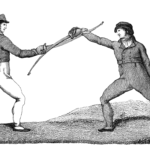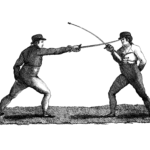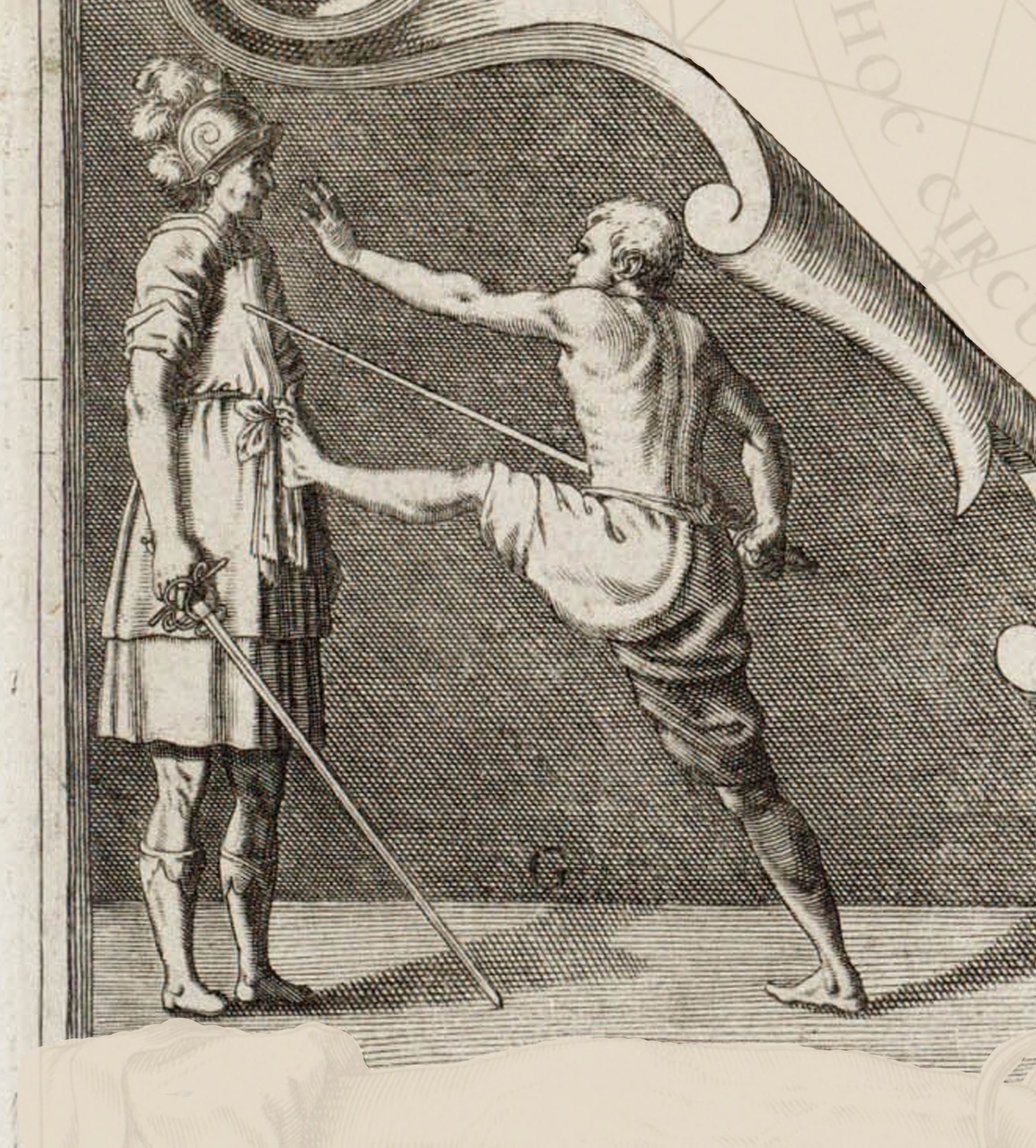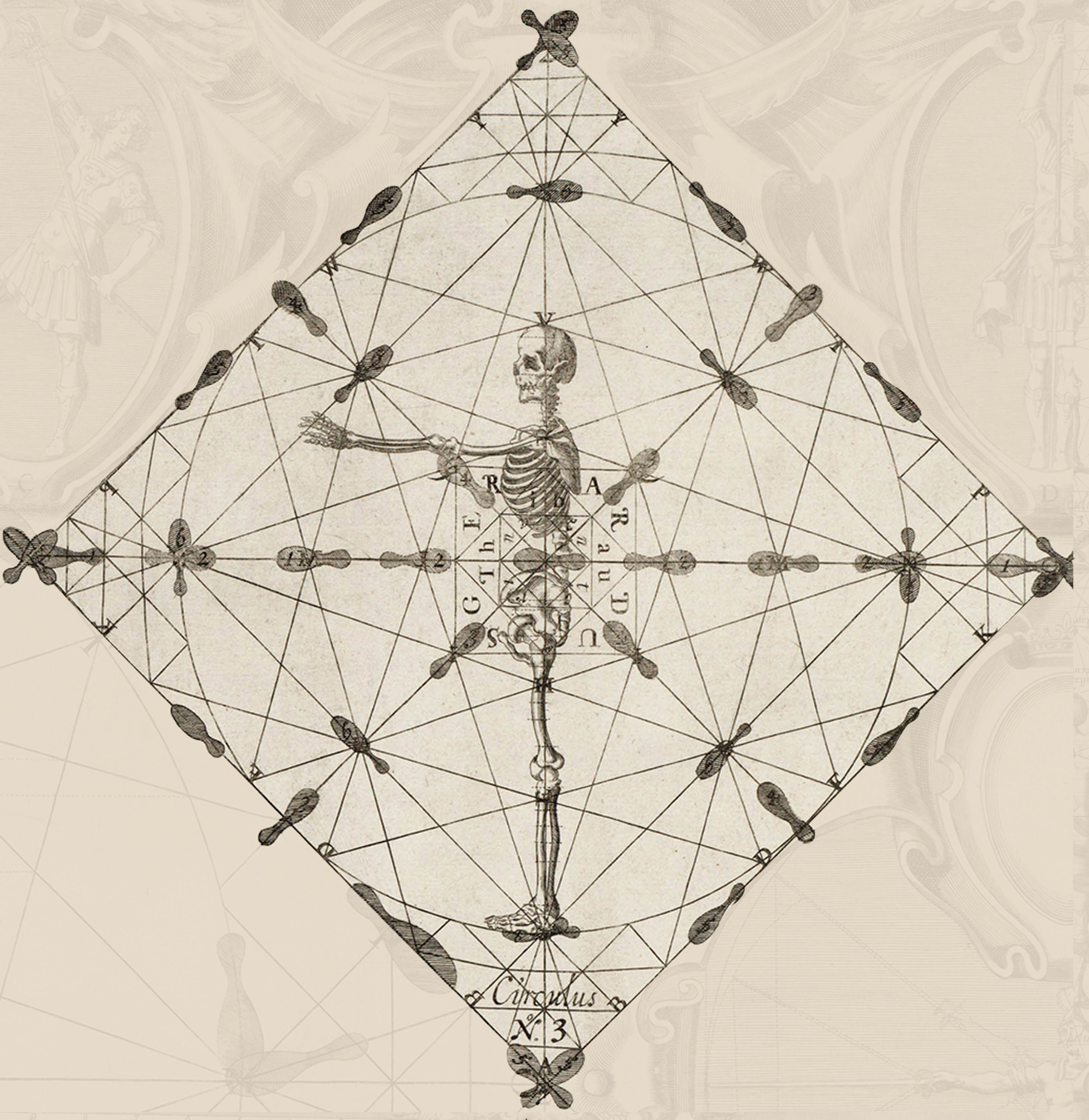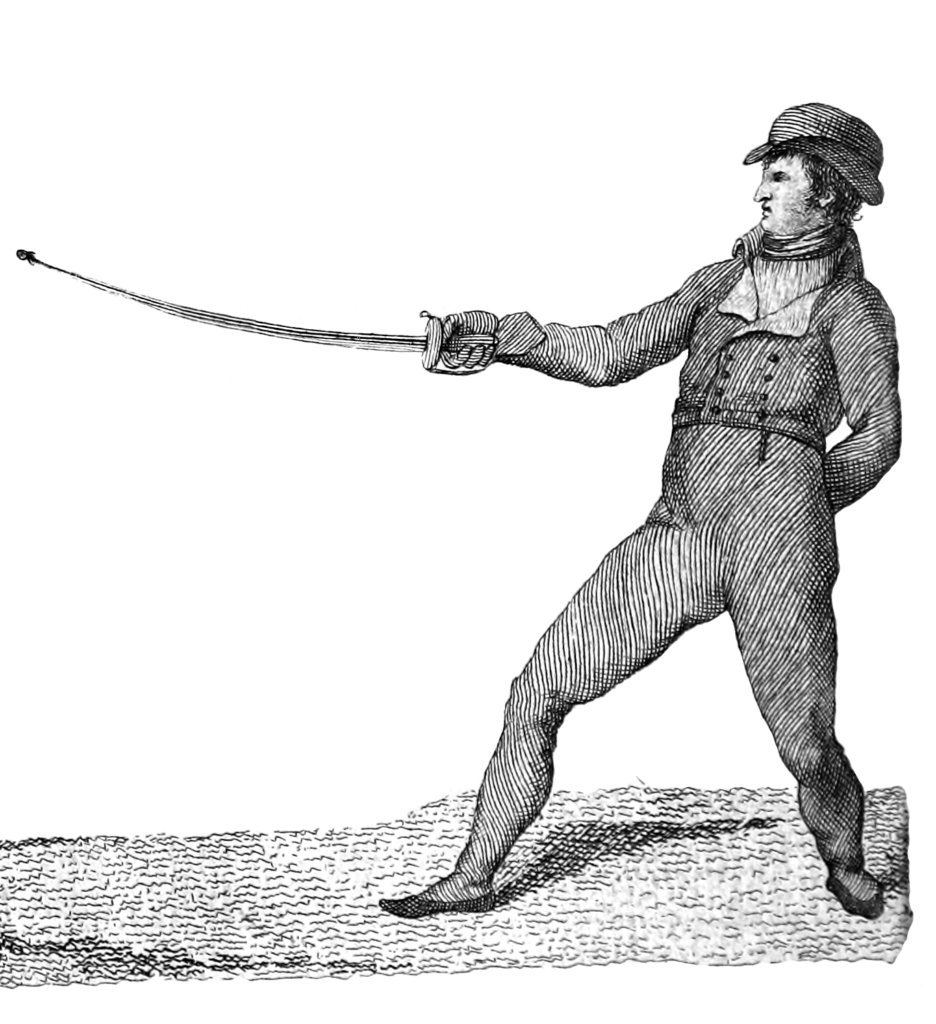125. What is said here can be considered as simple, solid, and fundamental principles. From the combination of these, results skill and success in the exercise of the sabre. It would be useless and even ridiculous to suppose that knowledge of the fundamentals of this art would be enough for readers to apply to form secure combinations, methods, and arrangements that have produced the deepest meditations, the most constant application, and the immense work which has employed subjects of erudition and study in the demonstration of arms. But, it is not opposed to the nature of this elemental writing to indicate some so that they might take them as a guide for their methods to progress and to make an infinite number of combinations to fit the possibilities.
126. A battle of two or more shots must begin with the formation and execution of a thrust from the guarded distance or the defensive measure. But, as this calls for a deep step, to repeat the second, there is no need to take a new distance, because it is achieved with the one that was chosen for the first blow. But, as the second shot is frequently executed from a different side than the first, this is where the motions of the body are sufficiently exercised and, these being true oppositions, and consequently useful, revisit and exercise them as long as is necessary for them to be practiced with the greatest violence and steadfastness.
Chapters:
- Removals of the Second Order
- Battles from the Guard of Third Forming the Second Attack from Below the Guard
- Shots Formed by the Point
- Battles from the Guard of Fourth Forming the Second Attack from Below the Guard
- Shots formed by the Point of the Sabre
- Battles of the Guard of Sixth
- Battles of the Guard of Fifth


